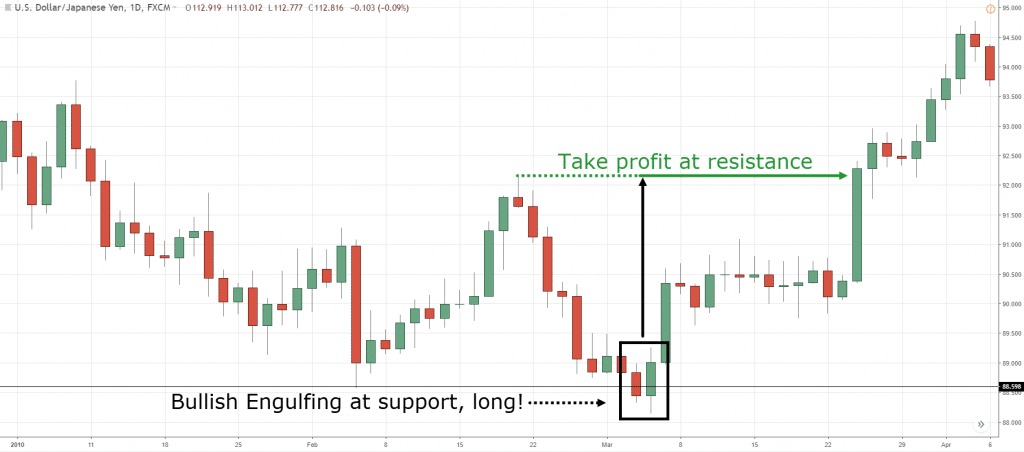Long before I started mentoring other traders, I was stuck in the same “one step forward, two steps backward” cycle of ups and downs that you are probably suffering from right now. Unfortunately, I noticed that most traders will never overcome this point.
Most traders spend most of their – often short – careers trading over and over again day after day, over-analyzing the short time frames in the market.
What’s worse is that when these traders don’t make the desired profit, they often double, which doesn’t work; they even try to trade at a higher rate than the one they are already at.
In today’s tutorial, I will share with you three ideas that have completely changed my trading career so that I can go beyond the boom and recession cycle and move the curve of my capital upwards. I am sure that when you reach the end, you will gain some serious practical knowledge that will allow you to change your trading career as well.
Trading in higher timeframes
I am very happy that I understood the importance of trading in higher time frames relatively early in my career. If I hadn’t done that, there’s a good chance I’d be joining countless others who just blew through, and who knows what I’d be doing now.
The reason why I went so far as to write an article that calls trading on the daily charts a “Holy Grail” is multifaceted:
Daily charts give the most important insight into the market.

There is less noise and false signals than in intraday charts.
I will teach you that patience and discipline pay off in the long run.
Trading daily charts requires less time and gives you more free time.
Using the daily chart or trading at the end of the day, you can adjust trading to any schedule you like.
Less chart watching and engagement means less temptation to trade excessively.
Trading on the daily chart slows everything down and allows you to focus on one trade after another, thereby focusing on the laser, and not on the scatter.
The less frequent trading of daily charts does not mean that you are taking a higher risk on a trade, nor does it mean that you cannot make as much money per month (two common misconceptions when trading daily charts).
These are just some of the reasons why trading with higher timeframes has changed my trading career. You can read more about it here.
In addition to the daily and weekly charts, I teach 4-hour and 1-hour chart trading in my course. However, I emphasize daily, because I firmly believe that they are the most important time frame for learning trading. I believe that any time frame of less than 1 hour is a waste of time and energy and is extremely peril for most people, even looking at them.
Low frequency trading
Most newcomers are attracted, at least to some extent, by the adrenaline lifestyle that dealers often portray in films.
Either from the movies or it is rumored that most newcomers have an idea that day trading is “cool and will make you rich quickly”. Sorry, but I have to laugh about it, because it’s just sooo far from the truth that almost everyone learns for themselves as soon as they start trying out day trading.
Now, frankly, you can act in this way if you want. You can do this for about a week. Then either you will run out of money, or your energy level will drop so much that you simply will not be able to move on.
This is in good agreement with my above point of view about trading with higher timeframes. Shortly after I realized that I had to focus on the charts with higher time frames, I also switched to what I call the low-frequency trading.
As I mentioned earlier, trading with higher timeframes (and less often) means that you have less chances to overplay and lose money.

However, the benefits do not end there.
Another reason I made this transition – and stuck with it – is that it meant to me that I could afford to take more risk in the transactions I made. I call it capital preservation, and it is an important concept to understand. The basic requirement is that you want to keep your trading capital for trades that meet the criteria of your trading strategy and which are obviously well-educated attitudes. Instead of risking money on installations that you are not sure about.
So you can still make good money on low-frequency trading. Think about it. If you make 30 trades per month, how high is your risk on each trade? If you make 3 trades per month, you can still risk the same total amount if you want, but you split it into 3 parts, not 30.
Of course, if you trade at a high frequency, you will suffer a higher percentage of losses. There is simply not a large number of trades in the markets with a high degree of probability in a given month. The lower the time frame and the more often you trade, the closer you get to gambling, simply because the element of randomness and false signals sounds comes into play to a greater extent.

I can afford to take a little more risk with each trade, as I rarely trade. First, it’s a calculated risk – literally. I have time to sit down, analyze the associated risk and decide whether it makes sense. I do not just conclude deals on the fly, without even thinking about it or thinking about it carefully.
If one of my riskiest deals doesn’t pay off, I’m not in terrible shape because I’m not going to do another dozen. I can relax, regroup and focus more on the opportunity.
In my experience, this kind of trading is usually difficult for people, because it is so contrary to intuition. We are taught to believe that the more we do something, the better we will get it; if you want real results, you need to do repetitions.
This will not help you in trading. What will help you is to take the time to explore your markets, learn the basics and only trade when it makes sense.
Another reason why a low frequency, sniper and crocodile approach to trading is so surprising is the quality of life.
In my experience, people who follow the “white noise” of trading are constantly stressed, full of anxiety and almost completely unable to relax.
Thanks, but no thanks.
I prefer to enjoy life both in commerce and beyond.
Price action signals and fusion
After all, the last change that really changed my life as a trader was to find entrances to trades with a higher probability, based on trading signals of price movements from merging levels in the market.
Let’s analyze them for those who are not familiar with this concept:
A price action is a price movement over a certain period of time. If you can read this, you can also determine the orientation of the market. You can trade safely, based on repetitive price patterns.
A merger is a point in the market where at least two levels intersect, or the level and signal that make up the merger point. The main thing to remember here is my T.L.S. principle or a trend level signal.
Here are some common merge examples I’m looking for:
Uptrend or downtrend
Exponential moving averages (e.g. 8- and 21-day EMAS on the daily chart)
Static support and resistance levels
Event areas
refund levels from 50% to 61.8%%
There are other forms of fusion, and I discuss this concept in much more detail in my trading course and in the personal area of the participants.
When I realized that I could reduce my technical approach to looking for some important market conditions, it had a huge impact on my trading. I no longer sat there and stared at many indicators every day, desperately trying to understand their conflicting signals. When I discovered how to use a price action in combination with a natural chart-based fusion, the veil of confusion rose for me.
Using a combination of merger signals and price action
Looking at the markets, I am looking for obvious signs of a pattern of price action that has arisen from the merger point in the market.
Of course, the only reason these things are “obvious” to me is because I’ve spent hours trying to recognize them. Fortunately, everyone can easily learn to do the same.



